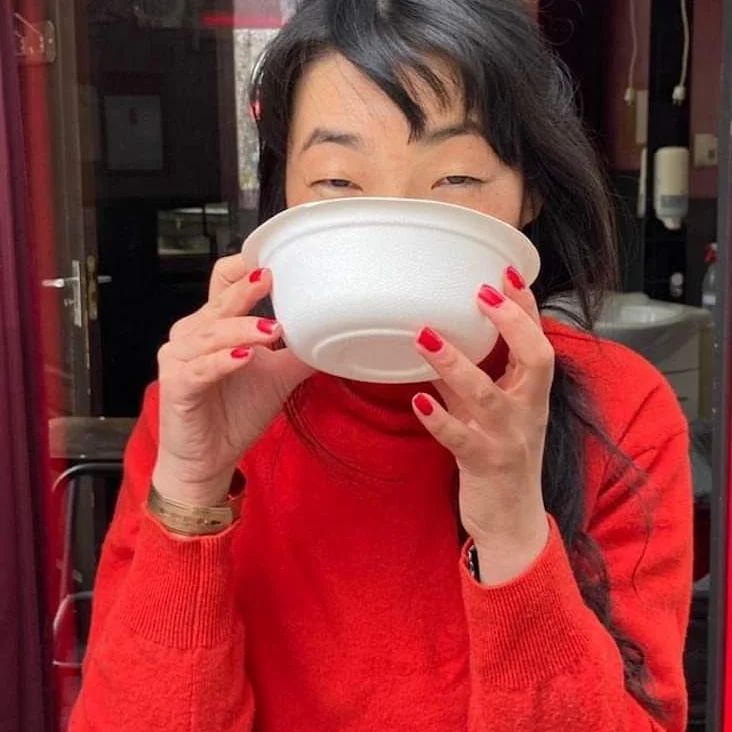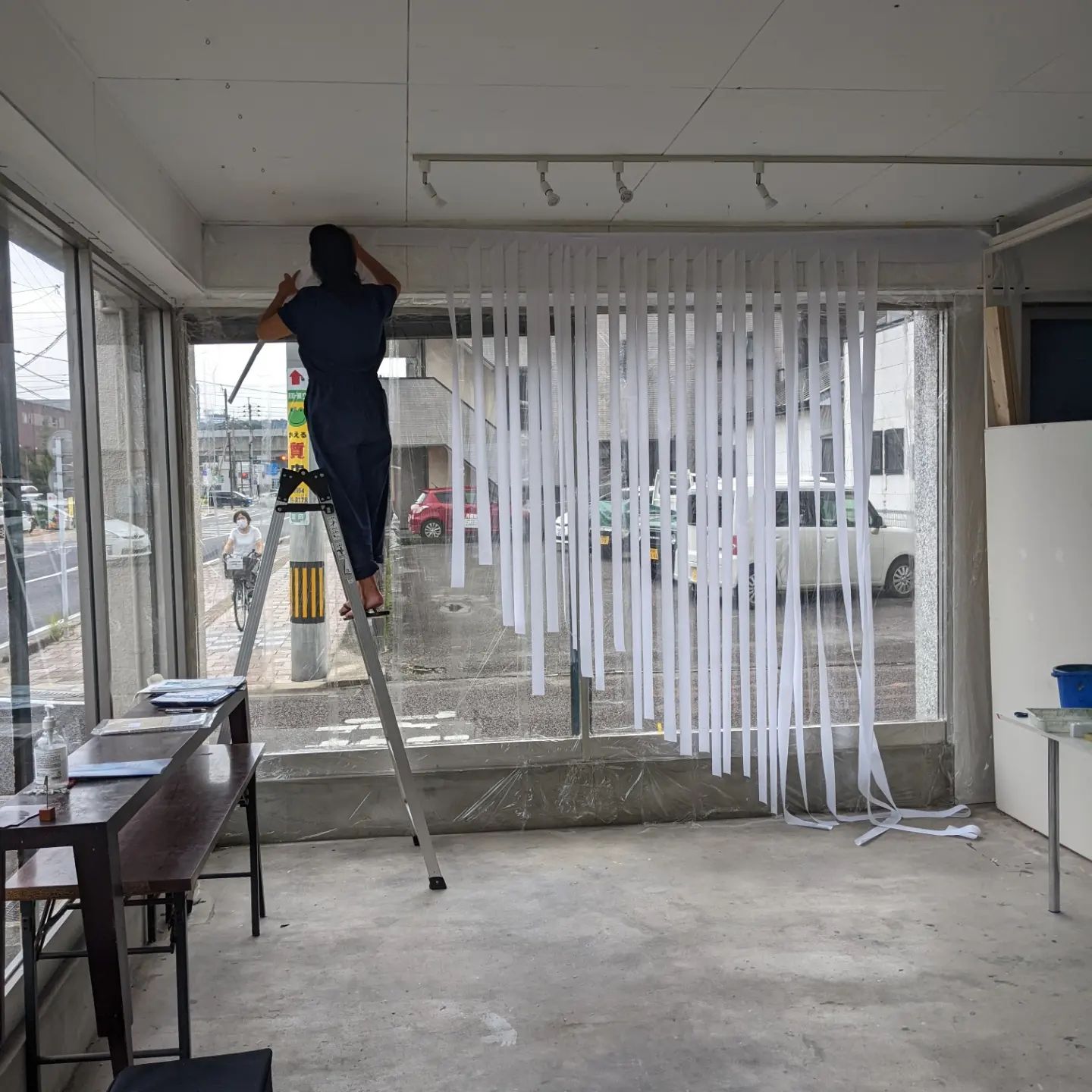
(English below)
新しいアーティストがやって来ました。
Mai Marie Dijksmaさんです。これから6週間の間、滞在制作を行なって行きます!
マイ・マリー・チュン・ダイクスマは、アーネム美術学校を卒業後、ヘリット・リートフェルト・アカデミーでデザイン、TXT(テキスタイル)の学士号を取得しています。2011年からは、儚さをテーマにしたビジュアルインスタレーションを制作しています。彼女の作品は、韓国、イギリス、スペイン、オランダで展示されています。また、ダンス、演劇、オペラの衣装デザイナーとしても活躍している。
マイ・マリーの芸術活動は、作品とそれが作られる空間との関係を探ること、作品の質感が空間や鑑賞者とどのように関わるかを調べること、そして最後に作品を作るために必要な肉体労働の価値を問い直し再定義すること、という3つの主要なアイデアを探求している。彼女にとって、インスタレーションを制作するプロセスは、インスタレーションそのものと同等の重要性を持っています。 彼女の作品では、制作したものが長く続くことよりも、その時間性がより重要視されています。インスタレーションが発表された後も、ゆっくりと構造を破壊していく形でプロセスが続くことが多い。
日本語には、2つの物体の間の空白を表す「間」という言葉があります。この「間」という概念は、空虚な空間やネガティブな空間としてではなく、生命を内包する空間として、常に再定義され続けています。グローバルで変化の激しい世界では、革新的なテクノロジーの開発が経済発展に不可欠であり、同じように画一的なブランドや高速消費が社会に内在する役割を担っていますが、一部のコミュニティでは、自分たちの文化のアイデンティティが失われつつあることを危惧しています。私たちの身の回りがどんどん均質化していく中で、それは私たちの記憶や空間認識にどのような影響を与えるのでしょうか。私は、STUDIO KURA / ARTS ITOYAで過ごす1ヶ月半の間、「間」という概念と、それが私たちの知覚や経験に与える影響という2つのテーマを探求していきたいと考えています。私の作品の中で出てくる根本的な疑問は、非西洋的な空間の理解と一致しているので、そのプロセスが自然に発展するようなコンテクストが必要だと感じています。STUDIO KURA / ARTS ITOYAは、この作品を発展させるのに非常に適した機関であると強く感じています。

New Artist has arrive!
Her name is Mai Marie Dijksma.
She will be staying here and make art works for 6weeks.
Mai Marie Choon Dijksma graduated from the Arnhem Hogeschool voor de Kunsten with a Bachelor in Fine Art and then completed her education with a Bachelor of Design, TXT (textile) at Gerrit Rietveld Academy. Since 2011 Mai Marie has created visual installations with the notion of ephemerality being the prominent drive in her creation process. Her work has been shown in South Korea, the United Kingdom, Spain and the Netherlands. Mai Marie also works in parallel as costume designer for dance, theater and opera productions.
Mai Marie’s artistic practice investigates three main ideas; to search for the relationship between the work and the space in which it is made, to investigate how the texture of the work relates to the space and the viewer, and finally to question and redefine the value of the physical labor required to produce the work. For her, the process of creating the installation is of equal importance to the installation itself. Within her work, the temporality of what she creates is more important than its longevity. Even after the installation is presented often the process continues in the form of slowly destroying the structure.
In the Japanese language there is a word for the void between two objects; ‘MA’. The concept of MA is continuously re-defined and not understood as empty or negative space, but instead as a space that contains life. In a global and fast changing world where the development of innovative technology is crucial to economic development, and the same uniform brands and fast consumption plays an immanent role in society, some communities fear that the identity of their own culture is being lost. As our surroundings become more and more homogenous, what does that do to our memories and our perception of space? During the one and a half months I will be spending at STUDIO KURA / ARTS ITOYA, I would like to explore two subjects: the concept of ‘MA’, and the influence it has on the way we perceive and experience our surroundings. Since the fundamental questions that come up in my work align themselves with a non-Western understanding of space, I feel that the process requires a context in which it will naturally develop, in this case- Japan. I strongly feel that STUDIO KURA / ARTS ITOYA would be a very good institution to develop this work.
